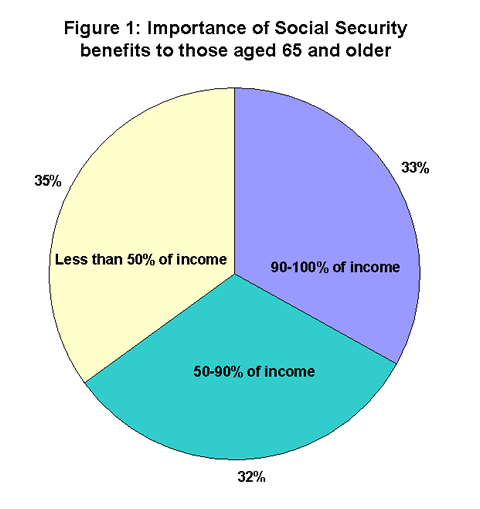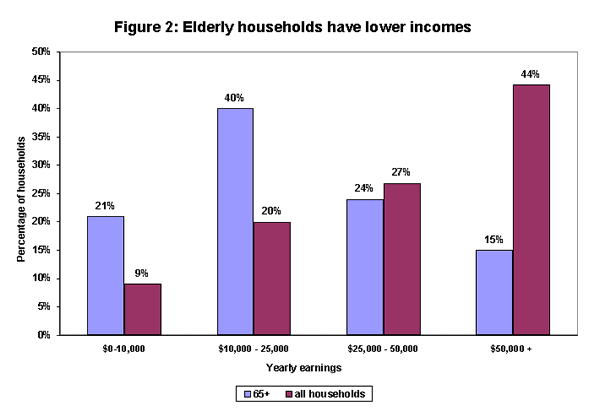See Snapshots Archive.
Snapshot for November 18, 2004.
Social Security and income
Social Security benefits are crucial to the vast majority of elderly Americans. Although these benefits are modest, they account for a large portion of income for many elderly households.
Figure 1 presents a summary of data collected by the Social Security Administration (SSA) from 2001. The SSA found that Social Security provided more than half of the total income for almost two-thirds of households comprised exclusively of those aged 65 and older and provided at least 90% of income for a third of this group.1

While Social Security benefits provide the lion’s share of income for most Americans aged 65 and over, their incomes remain far below those of the general population. Figure 2 compares data on 65-and-older households from the SSA with data on all household incomes from the Census Bureau, showing the percentage of households that fall within certain income bands.2 Twenty-one percent of 65-and-over households earn less than $10,000 in total money income annually, compared to 9% of all households. On the upper-end of the distribution, only 15% of 65-and-older households earn more than $50,000, compared to 44% of all households.

In addition to providing income to retired workers, the program plays an important role in providing disability insurance and survivors’ insurance to family members of deceased workers. The importance of Social Security benefits to elderly households cannot be overstated.
1. Technically, the unit of analysis in the SSA report is “aged units,” households with a married couple both aged 65 or older, or a person 65 or older who does not live with a spouse.
2. The unit of analysis for the Census Bureau data is slightly different than the SSA data. The Census Bureau defines a “household” as consisting of all the people who occupy a housing unit. A house, an apartment or other group of rooms, or a single room, is regarded as a housing unit when it is occupied or intended for occupancy as separate living quarters; that is, when the occupants do not live and eat with any other persons in the structure and there is direct access from the outside or through a common hall.
This Snapshot was written by EPI economist Josh Bivens.
